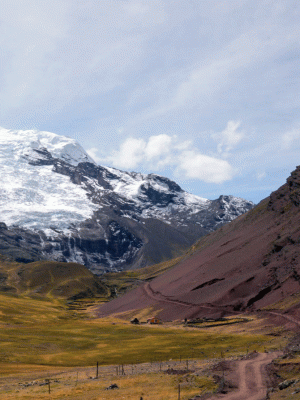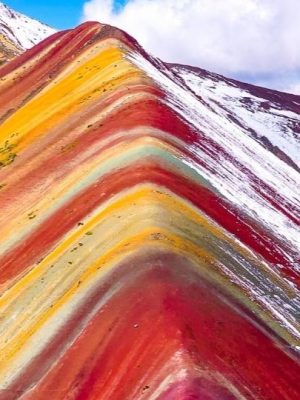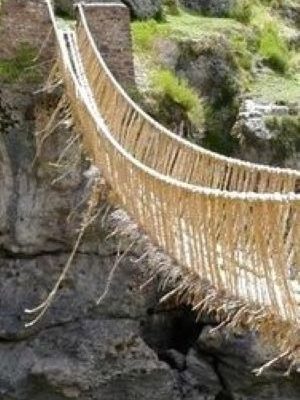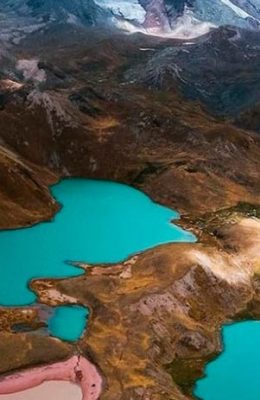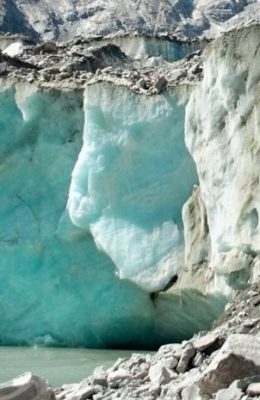CHOQUEQUIRAO
Choquequirao is an impressive Inca archaeological complex located in the Cusco region of Peru. It is often called the “sacred sister of Machu Picchu” due to its architectural similarities, beauty, and imposing mountaintop location, although it is much larger and less visited. Its name, which in Quechua means “Cradle of Gold,” alludes to the glow its rocks emit when illuminated by the sun.
Introduction
CHOQUERIAO
Choquequirao, often called the “sacred sister of Machu Picchu,” is a fascinating Inca archaeological complex. Unlike its famous counterpart, this site remains a hidden gem high in the Vilcabamba mountain range, accessible only on foot and offering an unparalleled trekking adventure.
Difficulty and Preparation
- Difficulty: Moderate to high due to altitude and uneven terrain
- Preparation: It is essential to acclimatize to the altitude before starting the trek.
- Equipment: Thermal clothing, trekking boots, hiking poles, sunscreen and camping gear
6 DAYS- 5 NIGHTS
Day 1: Cusco – Cachora – Capuliyoc – Chiquisca
Morning: Early morning pickup from your hotel in Cusco. You’ll travel by bus to the town of Cachora (2,900m / 9,515 ft), the starting point of the trek. After a final preparation, you’ll begin a gentle walk to Capuliyoc (2,950m / 9,678 ft), where you can enjoy your first views of the Apurímac Canyon.
Afternoon: The trail descends steeply into the canyon. The path can be dusty and hot, so it’s important to stay hydrated. You’ll reach the campsite at Chiquisca (1,930m / 6,332 ft) for the night.
Hiking time: Approximately 6-7 hours.
Day 2: Chiquisca – Marampata – Choquequirao
Morning: An early start is crucial for the most demanding day of the trek. You’ll descend to the Playa Rosalina bridge (1,550m / 5,085 ft) to cross the Apurímac River. The rest of the morning is a continuous, steep ascent to the village of Marampata (2,850m / 9,350 ft), where you will have lunch and a well-deserved rest.
Afternoon: The trail from Marampata to Choquequirao is much flatter. You’ll have your first glimpse of the magnificent ruins as you approach the campsite, which is located just below the main complex. You can set up your tent and watch the sunset over the mountains.
Hiking time: Approximately 6-7 hours.
Day 3: Exploring Choquequirao
Full Day: You will have a full day to explore the Choquequirao Archaeological Complex (3,050m / 10,007 ft) at your own pace with a guided tour. This is a rare opportunity to explore a major Inca site without the crowds. You’ll visit the main plaza, the llama terraces (Andenes de las Llamas), the ceremonial center, and the administrative sector. The extensive site covers several square kilometers, and this day is dedicated to uncovering its secrets.
Hiking time: Approximately 4-5 hours of walking within the complex.
Day 4: Choquequirao – Marampata – Chiquisca
Morning: After a final view of the ruins, you’ll begin your journey back. The trail retraces your steps from Day 2, starting with a gentle walk to Marampata.
Afternoon: You’ll face a long and steep descent from Marampata all the way back to the Apurímac River at Playa Rosalina. After crossing the bridge, you’ll have a short, challenging climb to the campsite at Chiquisca.
Hiking time: Approximately 6-7 hours.
Day 5: Chiquisca – Capuliyoc – Cachora – Cusco
Morning: Another early start for the final climb out of the canyon. The path is a relentless uphill trek from Chiquisca to the lookout point at Capuliyoc.
Afternoon: From Capuliyoc, the trail flattens out, offering a much easier walk back to the village of Cachora. Here, you’ll say goodbye to your support team and have lunch before taking private transportation back to Cusco. You’ll arrive in the evening and be dropped off at your hotel.
Hiking time: Approximately 7-8 hours.
Day 6: Departure from Cusco
Morning: Enjoy a final breakfast in Cusco. Depending on your flight schedule, you can do some last-minute souvenir shopping or explore the city.
Afternoon: Transfer to the airport for your departure.
INCLUDES + ROUTE DETAILS
Transportation
Pickup from your hotel in Cusco.
Transportation to the trek start.
Meals
Breakfast, lunch, and dinner during the trek.
Snacks (tea, hot water, cookies).
Cook and assistants during the trek.
Safety
First aid kit.
Emergency oxygen.
Not included:
Admission (15-20 soles)
Tips
Before the Hike
Acclimatize: Arrive in Cusco at least 2–3 days early to acclimatize to the altitude.
Pre-training: Hiking, running, or light cardio to build endurance.
Sleep well: Avoid staying up late or drinking alcohol the day before.
Equipment and Clothing
Small backpack (30–40 L): To carry water, snacks, a camera, a coat, and daily essentials.
Large backpack (60–70 L): If you don’t hire additional porters (mules usually carry some of the weight).
Layered clothing:
Quick-drying t-shirts.
Fleece jackets or a mid-layered coat.
Waterproof and windproof jacket.
Thermal clothing for the evenings (it gets very cold in Soraypampa).
Trekking footwear: Sturdy, comfortable, and waterproof boots.
Sandals/light sneakers: For resting at camp.
Hat, sunscreen, and sunglasses (strong sun at high altitudes).
Gloves, hat, and scarf (it can get cold in the early morning).
Headlamp with extra batteries.
Sleeping bag with a temperature of -10°C (if not, rent one).
Food and Hydration
Bring a reusable bottle or camelback (minimum 1.5–2 L).
Water purification tablets or a personal filter.
Energy snacks: nuts, chocolate, cereal bars.
Avoid alcohol and heavy meals during the trip.
Health and Safety Tips
Walk at your own pace, without rushing (especially on the climb to Salkantay Pass, 4,650 m).
Use coca leaves or sorojchi pills if you experience symptoms of altitude sickness.
Protect yourself from the cold at night and from the sun during the day (sudden changes in weather).
Bring a personal first-aid kit: pain relievers, band-aids, and your own medications.
Always follow the guide’s instructions.
Extras to Consider
Cash in soles (for swims, extra snacks, tips, and the Cocalmayo hot springs).
Swimsuit and a light towel if you plan to go to the hot springs.
Camera with extra battery (there’s not always electricity to charge).

